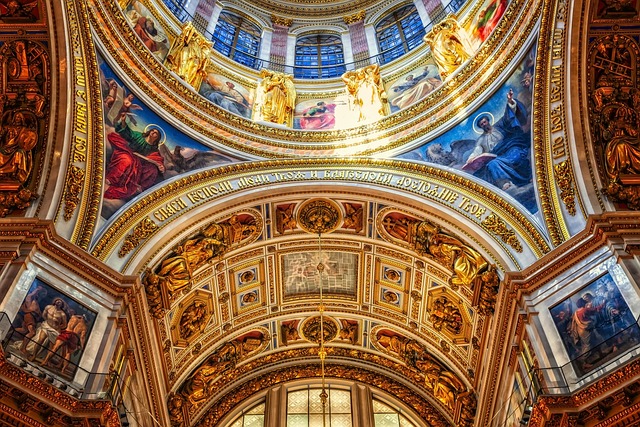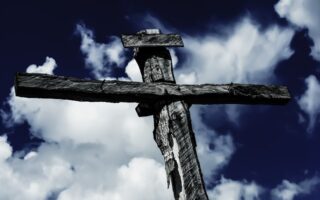Orthodox Christianity, also known as Eastern Orthodox Christianity, is one of the three major branches of Christianity, alongside Roman Catholicism and Protestantism. It traces its origins back to the early Christian Church and is characterized by its adherence to the teachings and traditions of the early Church Fathers. Regular Christianity, on the other hand, is a term that does not have a specific definition and is often used to refer to mainstream or non-denominational forms of Christianity. While both Orthodox Christianity and regular Christianity share a common belief in Jesus Christ as the Son of God and the Savior, there are notable differences in their theology, worship practices, and ecclesiastical structures.
Table of Contents
Origins and Historical Development of Orthodox Christianity
Orthodox Christianity Vs Regular Christianity: Origins and Historical Development of Orthodox Christianity
When it comes to Christianity, many people are familiar with the term “regular Christianity.” However, there is another branch of Christianity that often goes unnoticed – Orthodox Christianity. In this article, we will explore the origins and historical development of Orthodox Christianity, shedding light on its unique characteristics and how it differs from what is commonly referred to as “regular Christianity.”
Orthodox Christianity traces its roots back to the early days of Christianity, when the apostles spread the teachings of Jesus Christ. The word “Orthodox” itself means “correct belief” or “right worship,” emphasizing the importance of adhering to the original teachings and practices of the early Christian Church. This commitment to preserving the traditions and doctrines of the early Church is a defining characteristic of Orthodox Christianity.
One of the key differences between Orthodox Christianity and regular Christianity lies in their historical development. While regular Christianity has undergone various schisms and denominational divisions throughout history, Orthodox Christianity has remained relatively unified. This unity can be attributed to the strong emphasis on tradition and the authority of the Ecumenical Councils, which were gatherings of bishops from around the world to discuss and define matters of faith.
The first seven Ecumenical Councils, held between the 4th and 8th centuries, played a crucial role in shaping Orthodox Christianity. These councils addressed theological controversies and established important doctrines that are still upheld by Orthodox Christians today. For example, the Council of Nicaea in 325 AD affirmed the divinity of Jesus Christ and formulated the Nicene Creed, a statement of faith that is recited in Orthodox liturgies.
Another significant aspect of Orthodox Christianity’s historical development is its close connection to the Byzantine Empire. The Byzantine Empire, with its capital in Constantinople (modern-day Istanbul), served as the center of Orthodox Christianity for centuries. The Byzantine emperors played a prominent role in the Church, often exerting influence over its affairs. This close relationship between Church and state shaped the development of Orthodox Christianity and influenced its liturgical practices and artistic expressions.
In terms of worship and spirituality, Orthodox Christianity has its distinct rituals and traditions. The Divine Liturgy, the central act of worship in Orthodox churches, is characterized by its rich symbolism and elaborate rituals. Icons, sacred images of Christ, the Virgin Mary, and the saints, hold a significant place in Orthodox worship. They are venerated as windows into the divine and serve as aids for prayer and meditation.
Furthermore, Orthodox Christianity places a strong emphasis on asceticism and the pursuit of holiness. Monasticism, the practice of withdrawing from the world to live a life of prayer and contemplation, has been an integral part of Orthodox Christianity since its early days. Monks and nuns, through their ascetic lifestyle, seek to attain union with God and serve as spiritual guides for the faithful.
In conclusion, Orthodox Christianity has a rich and unique history that sets it apart from what is commonly referred to as “regular Christianity.” Its commitment to preserving the traditions and doctrines of the early Church, its unity, and its close connection to the Byzantine Empire have shaped its development over the centuries. The distinct rituals, emphasis on icons, and the pursuit of holiness through asceticism are all defining characteristics of Orthodox Christianity. By understanding these origins and historical development, we can gain a deeper appreciation for the diversity within the Christian faith and the richness of its traditions.
Key Beliefs and Doctrines in Orthodox Christianity

Orthodox Christianity and regular Christianity are two branches of the Christian faith that share many similarities but also have some distinct differences. In this article, we will explore the key beliefs and doctrines in Orthodox Christianity, shedding light on what sets it apart from regular Christianity.
One of the fundamental beliefs in Orthodox Christianity is the belief in the Holy Trinity. Orthodox Christians believe in one God who exists in three persons: the Father, the Son (Jesus Christ), and the Holy Spirit. This belief is central to their understanding of God’s nature and is expressed in their worship and prayers.
Another important aspect of Orthodox Christianity is the veneration of icons. Icons are religious images that depict Christ, the Virgin Mary, saints, and biblical events. Orthodox Christians believe that these icons are not mere paintings or decorations but rather windows into the divine. They see them as a means of connecting with the spiritual realm and as aids in their worship and devotion.
In addition to the veneration of icons, Orthodox Christianity places great emphasis on the sacraments. Sacraments are sacred rituals that are believed to convey God’s grace to the participants. The Orthodox Church recognizes seven sacraments, including baptism, chrismation (confirmation), Eucharist (communion), confession, marriage, holy orders, and anointing of the sick. These sacraments are seen as transformative experiences that bring believers closer to God and strengthen their faith.
Orthodox Christianity also has a rich liturgical tradition. The Divine Liturgy, the primary worship service in the Orthodox Church, is a solemn and reverent celebration of the Eucharist. It is characterized by its use of ancient prayers, hymns, and rituals that have been passed down through generations. The liturgy is seen as a participation in the heavenly worship and a way for believers to encounter the presence of God.
Another distinctive aspect of Orthodox Christianity is its understanding of salvation. While regular Christianity often emphasizes the individual’s personal relationship with Jesus Christ and the need for faith in Him for salvation, Orthodox Christianity places greater emphasis on the transformative process of theosis. Theosis, also known as divinization or deification, is the belief that through the grace of God, humans can become more like God in their character and actions. It is a lifelong journey of spiritual growth and union with God.
Orthodox Christianity also has a strong sense of tradition and authority. The Orthodox Church traces its roots back to the early Christian communities and sees itself as the continuation of the apostolic tradition. It places great importance on the teachings of the early Church fathers and the decisions of the Ecumenical Councils. The authority of the Church is vested in the bishops, who are seen as the successors of the apostles and have the responsibility of preserving and transmitting the faith.
In conclusion, Orthodox Christianity has several key beliefs and doctrines that distinguish it from regular Christianity. These include the belief in the Holy Trinity, the veneration of icons, the emphasis on sacraments and liturgy, the understanding of salvation as theosis, and the strong sense of tradition and authority. While both branches of Christianity share a common foundation in Jesus Christ, Orthodox Christianity offers a unique perspective and spiritual journey for its followers.
Worship Practices and Liturgical Traditions in Orthodox Christianity
Orthodox Christianity and regular Christianity may seem similar on the surface, but when it comes to worship practices and liturgical traditions, there are some distinct differences. In Orthodox Christianity, worship is a deeply rooted and sacred experience that follows a rich and ancient tradition.
One of the key differences between Orthodox Christianity and regular Christianity lies in the worship service itself. In regular Christianity, worship services can vary greatly from one church to another. Some churches may have a more contemporary style of worship, with modern music and a less formal atmosphere. Others may have a more traditional approach, with hymns and a structured order of service. In Orthodox Christianity, however, the worship service is highly structured and follows a specific liturgical tradition.
In Orthodox Christianity, the worship service is known as the Divine Liturgy. It is a solemn and reverent experience that is meant to transport the worshipper into the presence of God. The Divine Liturgy is conducted in a sacred space known as the sanctuary, which is separated from the rest of the church by an iconostasis, a screen adorned with icons. This physical separation symbolizes the separation between heaven and earth.
The liturgical traditions in Orthodox Christianity are deeply rooted in ancient practices that have been passed down through generations. The worship service is conducted in a language known as Church Slavonic or Greek, depending on the region. This use of a sacred language adds to the sense of reverence and connects the worshipper to the historical and cultural roots of the faith.
Another important aspect of worship in Orthodox Christianity is the use of icons. Icons are sacred images that depict Christ, the Virgin Mary, and various saints. They are not worshipped, but rather venerated as a means of connecting with the divine. Icons are often placed throughout the church, and worshippers may kiss or touch them as a sign of reverence.
In addition to the use of icons, Orthodox Christianity also places a strong emphasis on ritual and symbolism. The worship service is filled with symbolic gestures and actions that are meant to deepen the worshipper’s connection with God. For example, the lighting of candles represents the light of Christ, while the burning of incense symbolizes the prayers of the faithful rising to heaven.
Orthodox Christians also have a rich tradition of liturgical music. Chanting is an integral part of the worship service, with hymns and psalms being sung in a monophonic style. The music is often accompanied by traditional instruments such as the Byzantine lyra or the Russian balalaika. The melodies are hauntingly beautiful and add to the overall sense of reverence and awe.
In conclusion, the worship practices and liturgical traditions in Orthodox Christianity set it apart from regular Christianity. The highly structured and sacred nature of the worship service, the use of icons and symbolism, and the emphasis on ritual and music all contribute to a deeply spiritual and transformative experience. Whether one is a member of Orthodox Christianity or regular Christianity, it is important to appreciate and respect the unique traditions and practices that shape each faith.
Differences in Church Hierarchy and Authority between Orthodox Christianity and Regular Christianity
Orthodox Christianity and regular Christianity may seem similar on the surface, but there are some key differences that set them apart. One of the main distinctions lies in the church hierarchy and authority. Understanding these differences can shed light on the unique practices and beliefs of each branch of Christianity.
In Orthodox Christianity, the church hierarchy is structured in a way that emphasizes the importance of tradition and continuity. At the top of the hierarchy is the Patriarch, who is the highest-ranking bishop and serves as the spiritual leader of the Orthodox Church. The Patriarch is considered the successor of the Apostle Peter and holds significant authority in matters of doctrine and church governance.
Beneath the Patriarch are the Metropolitans, who oversee specific regions or dioceses within the Orthodox Church. They are responsible for the spiritual well-being of their respective areas and work closely with the local clergy and laity. The Metropolitans are appointed by the Patriarch and are accountable to him.
Below the Metropolitans are the Bishops, who are responsible for overseeing individual parishes within their dioceses. They are ordained by the Metropolitans and are entrusted with the spiritual guidance and pastoral care of their congregations. Bishops play a crucial role in maintaining the Orthodox faith and ensuring its adherence to tradition.
In regular Christianity, the church hierarchy and authority differ in some significant ways. While there is still a hierarchical structure, it is often less centralized and more diverse. The highest-ranking authority in regular Christianity is typically the Pope, who is the head of the Roman Catholic Church. The Pope is believed to be the successor of Saint Peter and holds supreme authority over matters of faith and morals.
Beneath the Pope are the Cardinals, who are appointed by him and serve as his advisors. They play a crucial role in the governance of the Catholic Church and participate in the election of a new Pope when the position becomes vacant. Cardinals are often highly respected figures within the church and hold significant influence.
In Protestant Christianity, the hierarchy and authority are generally more decentralized. There is no central figure like the Pope or the Patriarch. Instead, authority is often vested in individual pastors or church leaders. Each congregation or denomination may have its own structure and leadership, with varying degrees of authority and decision-making power.
The differences in church hierarchy and authority between Orthodox Christianity and regular Christianity reflect the unique historical and theological developments of each branch. Orthodox Christianity places a strong emphasis on tradition and continuity, with a centralized hierarchy that ensures the preservation of the faith. Regular Christianity, on the other hand, has a more diverse and decentralized structure, reflecting the diversity of beliefs and practices within the broader Christian tradition.
Understanding these differences can help foster a greater appreciation for the rich tapestry of Christian beliefs and practices. Whether one identifies as Orthodox or regular Christian, it is important to recognize and respect the unique traditions and structures that shape each branch. Ultimately, both branches share a common goal of seeking a deeper relationship with God and living out the teachings of Jesus Christ.
Conclusion
In conclusion, Orthodox Christianity and regular Christianity differ in various aspects such as their historical development, liturgical practices, and theological beliefs. While both branches share a common foundation in the teachings of Jesus Christ, Orthodox Christianity places a strong emphasis on tradition, sacraments, and the authority of the Church. Regular Christianity, on the other hand, encompasses a broader range of denominations and may exhibit more diversity in beliefs and practices. Ultimately, the choice between Orthodox Christianity and regular Christianity depends on individual preferences and interpretations of faith.
For licensing reasons, we must provide the following notice: This content was created in part with the help of an AI.


